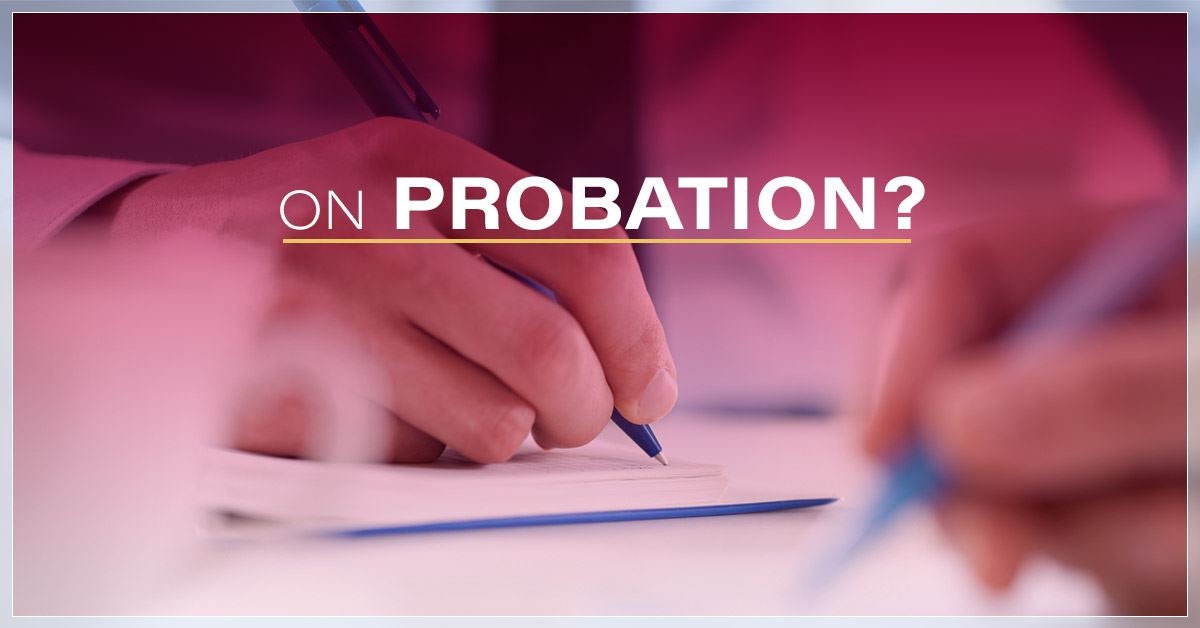Probation. The word itself can conjure images of constraint, restriction, and a life lived under watchful eyes. However, beyond the surface-level understanding, lies a complex tapestry of regulations, requirements, and rehabilitation. To truly grasp what it means to be on probation, one must delve into its multifaceted nature, exploring not only the limitations it imposes but also the opportunities it presents for personal transformation and societal reintegration. Forget the Hollywood portrayals. Let’s unpack the realities.
The Genesis of Probation: A Bird’s-Eye View
Probation, in its essence, is a court-ordered sentencing alternative to incarceration. It allows an individual convicted of a crime to remain in the community, albeit under specific conditions and the supervision of a probation officer. Consider it a second chance, an opportunity to demonstrate contrition and make amends for past transgressions without the complete deprivation of freedom that imprisonment entails. This is not a ‘get out of jail free’ card, but a carefully constructed path towards rehabilitation.
The Conditions: Navigating the Labyrinth of Rules
The specific conditions of probation can vary significantly depending on the nature of the offense, the individual’s criminal history, and the jurisdiction. Some stipulations are almost universally applied, while others are tailored to address specific needs or risks. Regular check-ins with a probation officer are almost always mandated. Imagine the probationary period as a tailored suit. Here are a few potential threads:
- Regular Reporting: Scheduled meetings with a probation officer to monitor compliance and address any concerns.
- Drug and Alcohol Testing: Periodic screenings to ensure abstinence from prohibited substances.
- Restitution: Compensation to the victim for losses or damages incurred as a result of the crime.
- Community Service: Unpaid work performed for a non-profit organization or government entity.
- Curfews: Restrictions on movement during certain hours of the day.
- Travel Restrictions: Limitations on the ability to travel outside of a specified area.
- Association Restrictions: Prohibitions on contact with certain individuals, such as co-defendants or victims.
- Therapy or Counseling: Mandatory participation in programs designed to address underlying issues, such as substance abuse or anger management.
- Employment Requirements: Obligation to maintain employment or actively seek work.
Non-compliance with these conditions, even seemingly minor infractions, can trigger a violation of probation, potentially leading to revocation and subsequent imprisonment. Vigilance is paramount.
The Probation Officer: More Than Just a Watchdog
The probation officer often perceived as merely a disciplinarian, plays a pivotal role in the probationer’s journey. They serve as a point of contact, providing guidance, support, and resources to help the individual navigate the complexities of probation and achieve their rehabilitative goals. The best relationships between probationers and officers are built on transparency and a shared commitment to positive change. It’s a partnership, albeit one with inherent power dynamics.
The Psychological Impact: A Balancing Act
Being on probation can have a profound psychological impact. The constant scrutiny, the limitations on freedom, and the ever-present threat of revocation can induce significant stress, anxiety, and depression. Conversely, successful completion of probation can foster a sense of accomplishment, self-efficacy, and renewed hope for the future. This transformation hinges on internal fortitude and external support.
The Role of Technology: Surveillance in the Digital Age
In an increasingly technologically driven world, probation is evolving to incorporate new methods of monitoring and supervision. Electronic monitoring, such as ankle bracelets, can track an individual’s location and ensure compliance with curfew restrictions. GPS tracking offers a constant eye. Furthermore, some jurisdictions are experimenting with the use of smartphone apps to facilitate communication, provide reminders, and deliver educational content.
Probation vs. Parole: Unraveling the Semantic Knot
Probation and parole, while often used interchangeably, are distinct concepts. Probation, as discussed, is a sentencing alternative to incarceration, whereas parole is the conditional release of an inmate from prison after serving a portion of their sentence. Think of it as the difference between preventing imprisonment and shortening it. Parolees are still under the supervision of a parole officer and subject to certain conditions, similar to probationers.
The Termination of Probation: A New Dawn
Successful completion of the probationary period marks a significant milestone. Upon termination, the individual is no longer subject to the conditions of probation and regains their full rights and freedoms (with some exceptions, depending on the nature of the offense). This accomplishment represents a tangible demonstration of rehabilitation and a commitment to a law-abiding life.
The Bigger Picture: Societal Implications
Probation serves a crucial role in the criminal justice system. It provides a cost-effective alternative to incarceration, reduces overcrowding in prisons, and promotes rehabilitation by allowing individuals to remain in their communities, maintain employment, and support their families. However, the effectiveness of probation hinges on adequate funding, well-trained probation officers, and access to necessary resources and support services. A comprehensive approach is essential.
Beyond the Legal Definition: A Chance for Redemption
Ultimately, being on probation is more than just adhering to a set of rules. It’s an opportunity for personal growth, self-reflection, and a chance to rebuild one’s life. It demands accountability, responsibility, and a genuine commitment to change. While the path may be challenging, the rewards of successful completion are immeasurable – a restored reputation, a renewed sense of purpose, and a second chance at a fulfilling life. Probation isn’t just a sentence; it’s a potential springboard.







Leave a Comment